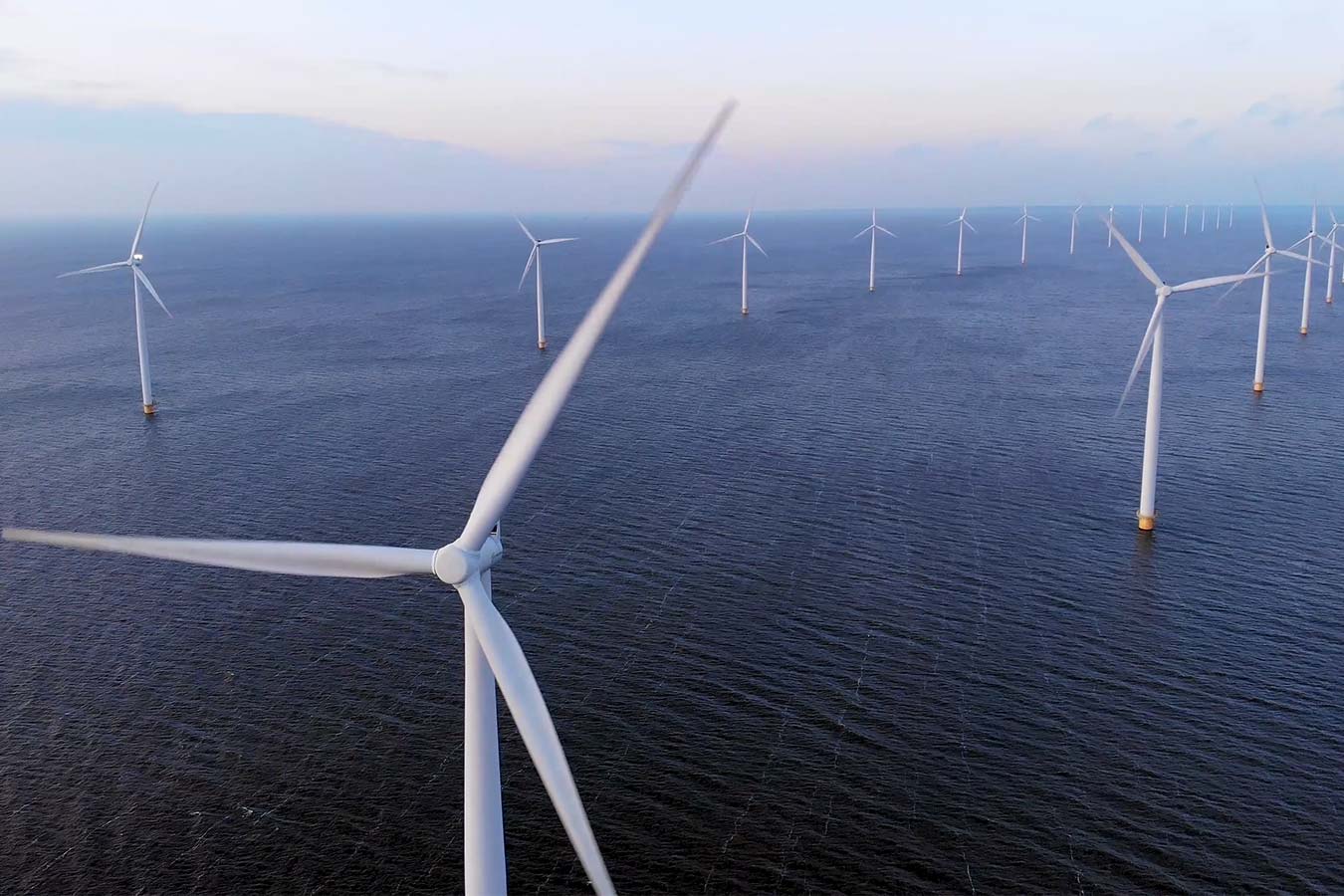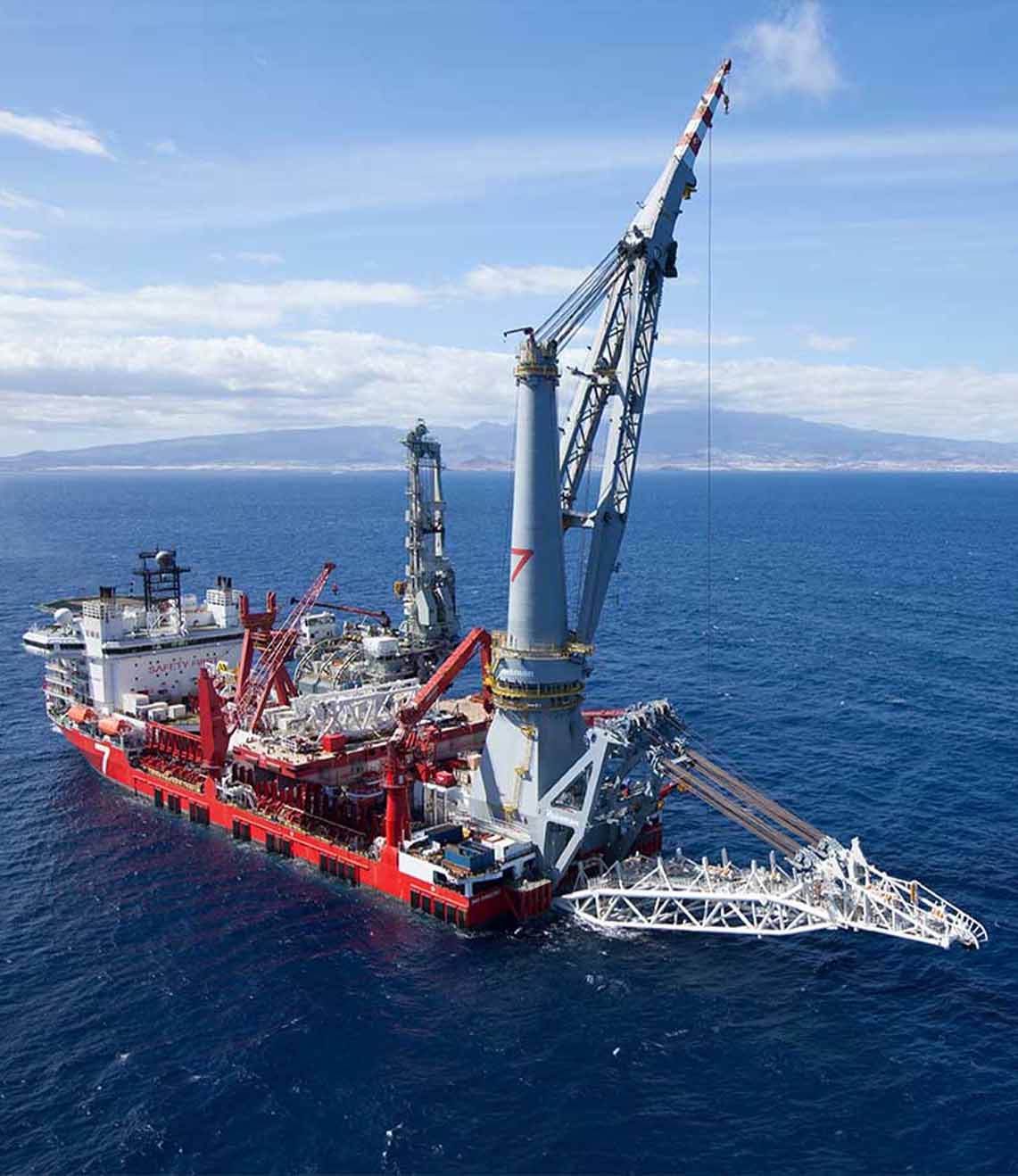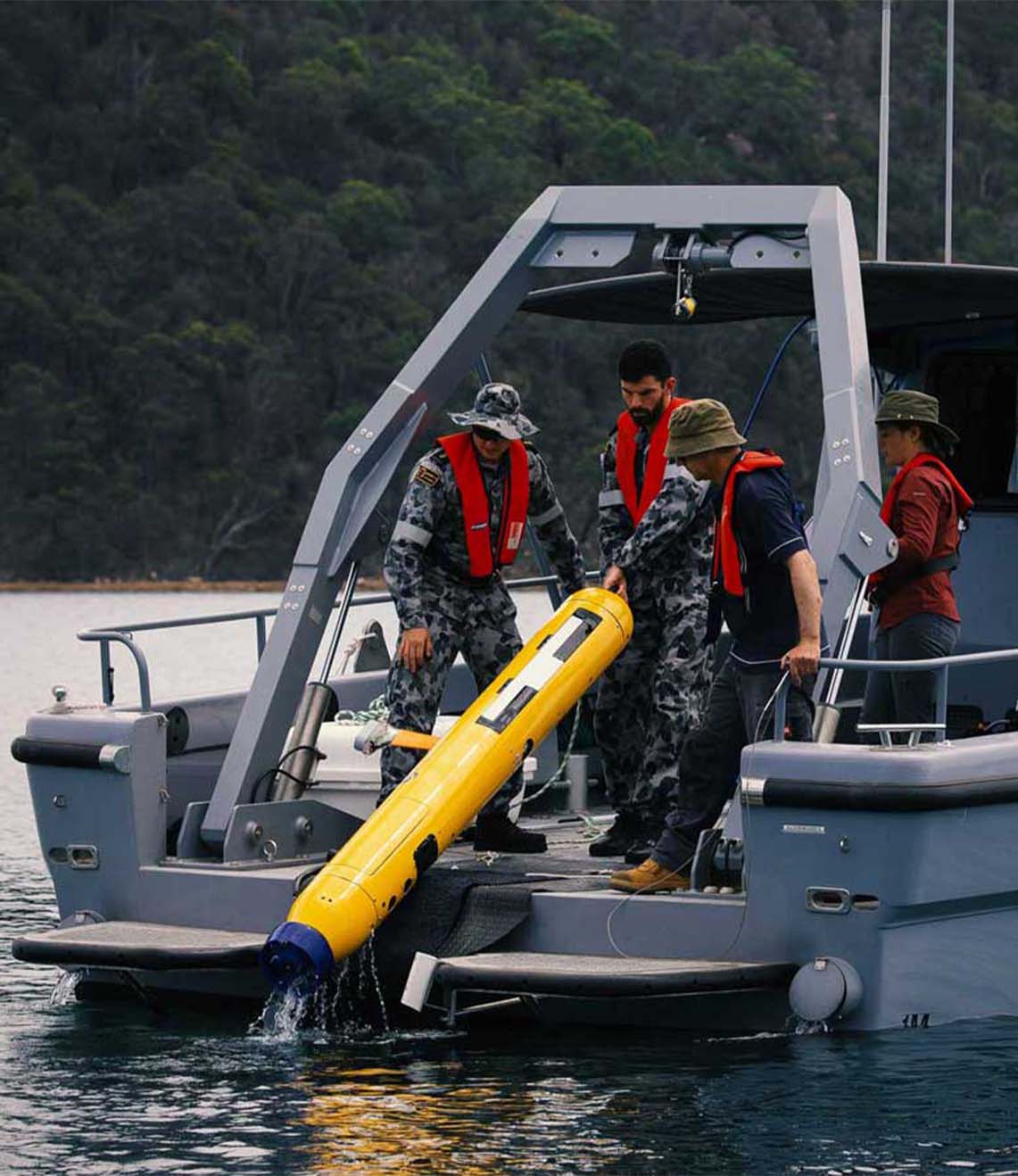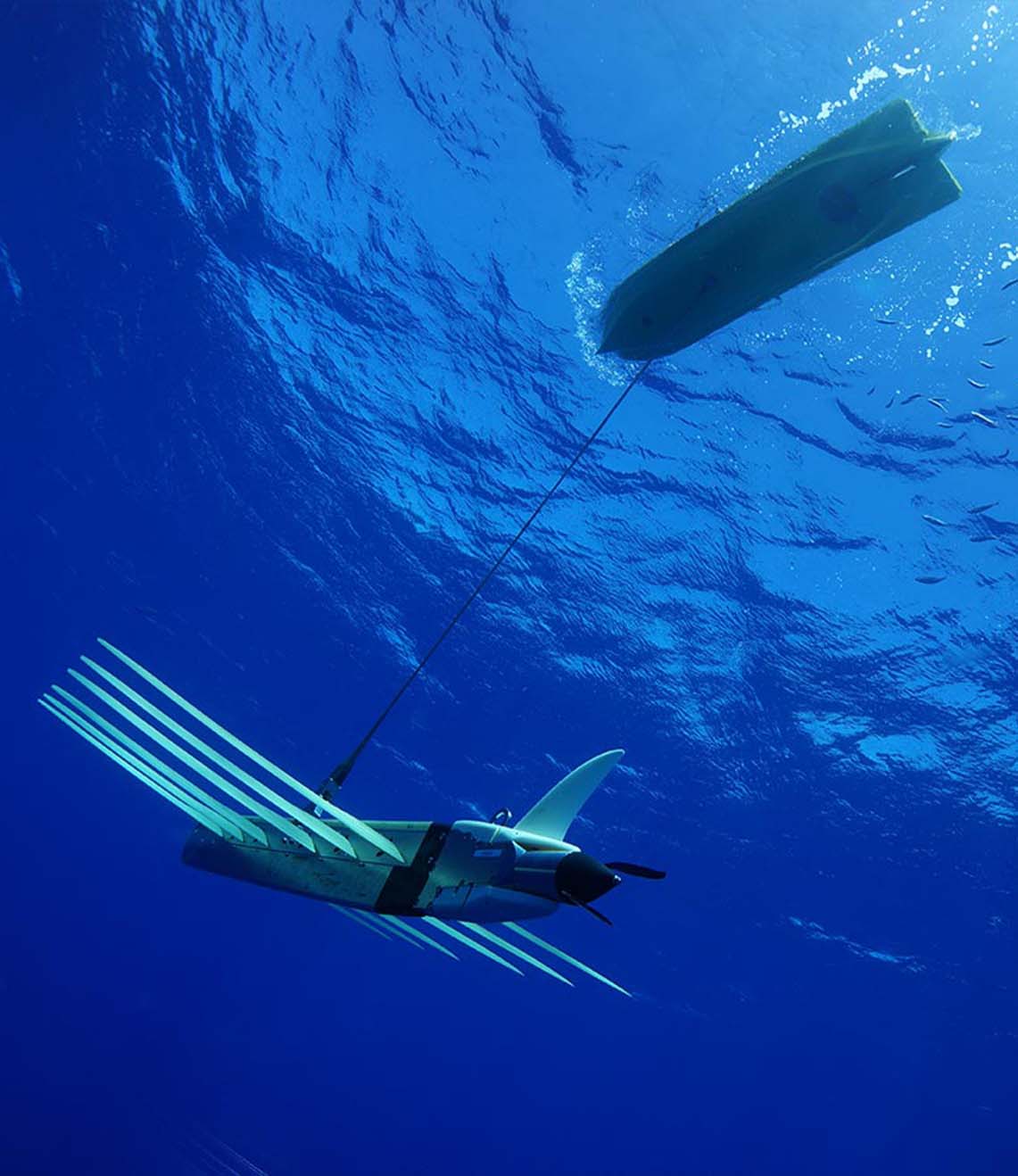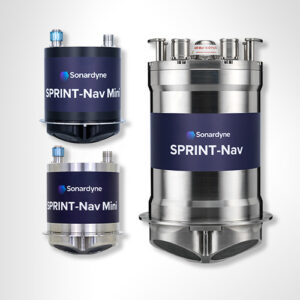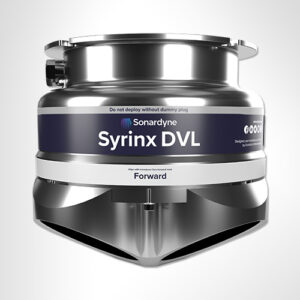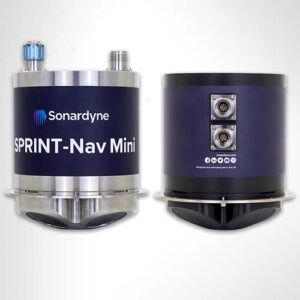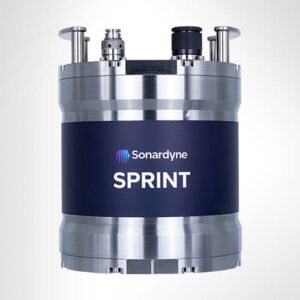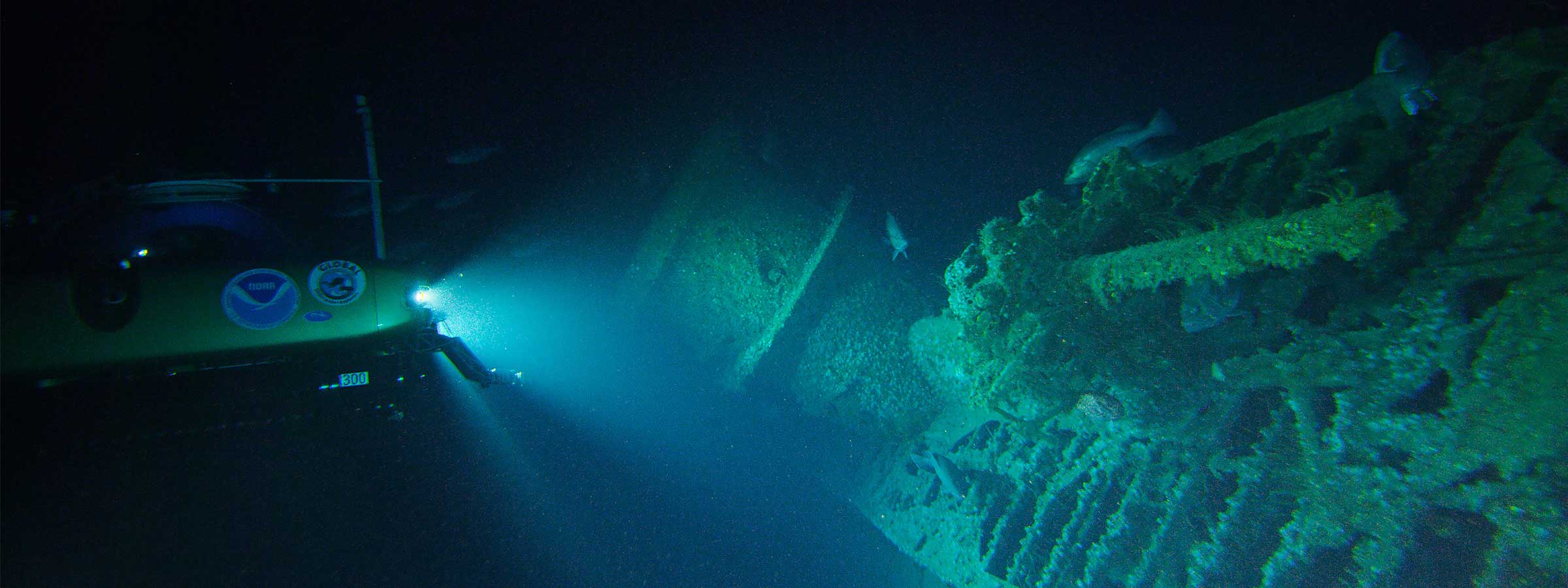
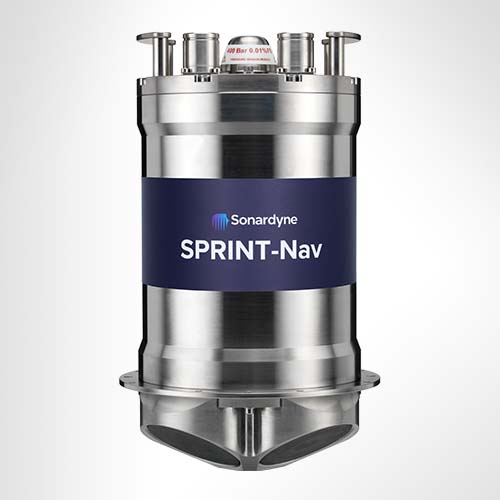
With INS, DVL and depth data in one tightly integrated unit, SPRINT-Nav is ready for any subsea or surface vehicle navigation task. Deepwater ROVs and AUVs needing ultimate accuracy, not a problem. Shallow water USV operations for high altitude bottom lock, not a problem. It’s even pre-calibrated so you can get straight to work.
At a glance
Calibration free all-in-one navigation instrument for subsea and surface platforms
INS, DVL, AHRS and depth
600 kHz and 400 kHz DVL options. Supports ADCP functionality
Small form factor; easy to install
4,000 and 6,000 m options
Four performance levels; 300, 500, 700 and new X
Saves time. Saves cost. Saves payload space
Want to find out more?
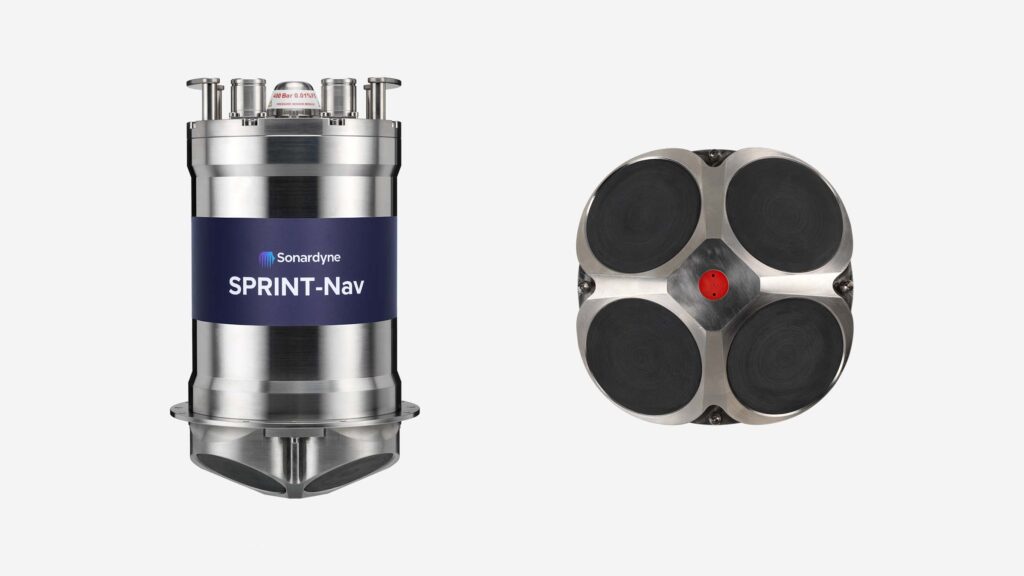
Measuring just 395 mm tall, SPRINT-Nav packs incredible performance into a very small form factor
Each Syrinx DVL puck has a full depth rated water block to prevent flooding if damaged
SPRINT-Nav X offers a level of performance orders of magnitude better than anything else on the market today
Pressure sensors requiring recalibration can be removed with the main unit remaining installed in the vehicle
Which SPRINT-Nav is right for your vehicle operations?
300
Supports dual ROV and Survey use and standalone ROV guidance. Also provides mid-water station keeping with vendor independent USBL aiding.
500/700
High performing survey-grade subsea INS proven to support a wide range of demanding applications including dynamic mobile mapping. Tightly integrated with Sonardyne acoustics.
X
SPRINT-Nav X is the highest-grade model in our SPRINT-Nav family designed for very specialist applications such as long endurance missions using XLUUVs.
Overview
SPRINT-Nav is an all-in-one navigation instrument for underwater (ROV, AUV, SDV) and surface vehicles (USV). It combines our SPRINT INS, Syrinx DVL and high accuracy intelligent pressure sensor in a single housing that is one of the smallest combined inertial navigation instruments on the market.
SPRINT-Nav is available in four different performance levels; 300, 500, 700 and X, and two different depth ratings; 4,000 and 6,000 m. It offers two DVL frequencies; 600 kHz and a high-altitude 400 kHz option.
Inside SPRINT-Nav is an inertial measurement unit (IMU), designed by us and built around carefully selected, highly robust and accurate Honeywell ring laser gyro (RLG) inertial sensors and Honeywell accelerometers. The INS is tightly coupled with a Syrinx DVL, from which the INS takes beam-level data, as well as integrating a high-performance pressure sensor. Tightly integrating raw sensor data from the IMU and DVL at a low-level like this means that higher levels of accuracy and reliability are achieved.
Careful design and strict control of all parts of the SPRINT-Nav is what enables SPRINT-Nav to provide unprecedented performance not rivalled by any other solution.
SPRINT-Nav’s dual algorithm capability is unique in the market and allows for simultaneous use from one instrument, e.g. AHRS plus DVL for ROV piloting, INS plus DVL for survey operations. SPRINT-Nav is calibration free. It can also support ADCP functionality (upgrade option).
With power-pass-through, aiding sensors can be powered directly, reducing cabling cost and complexity. Sensor offsets are rigid and very accurately known, helping to reduce systematic errors in lever arm measurements. The pressure sensor module can be removed for calibration or repair without incurring downtime.
Each Syrinx transducer is fitted with a full depth rated water block to ensure the protection of the internal components. The transducers are individually replaceable at Sonardyne’s regional offices to keep repair costs and times to a minimum.
Export of SPRINT-Nav is simplified as compared to other separate DVL and INS units. For example, shipping from outside the USA does not require a re-export licence.
It’s also fast to initialise, with no need for calibration manoeuvres, before or during a mission. This is due to the fact it runs two algorithms where the INS can instantly initialise from the AHRS. However, fast initialisation is also made possible due to the RLG’s very deterministic characteristic, compared with other types of gyros like fibre optic gyros (FOGs).
Our topside software, whether the dedicated SPRINT application or Fusion 2 combined INS and LBL package, is also very user-friendly and a great tool for monitoring system health and trouble-shooting potential issues during mobilisation and operation.
SPRINT-Nav X
The latest addition to the SPRINT-Nav family, offers a level of performance orders of magnitude better than anything else commercially available today – we’re talking calibration-free out-of-the-box navigational accuracy of <0.01% of total distance travelled or better than 0.04% of distance from origin. Achieving this level of navigation accuracy makes it possible for long-endurance AUVs and USVs to be suitable replacements for the large, crewed surface vessels that are utilised today, to conduct operations within energy, defence and science.
Echo Observer for Syrinx (EOS)
EOS is a software application SPRINT-Nav systems which allows Acoustic Doppler Current Profiling (ADCP) data to be viewed, quality controlled, logged, and then exported. This standalone application is compatible with Windows 7 or 10 and requires only modest processing resources.
EOS provides an intuitive interface to the Syrinx component of SPRINT-Nav, allowing the device to be configured over Serial port or Ethernet with a quick setup procedure for ADCP measurements. Users can immediately view the profile data and make any necessary adjustments before committing to a long-term deployment.
Once initial data inspection has been completed, EOS provides the link to the onward data processing chain: Industry-standard PD0 data can be exported as comma-separated variable (CSV) files, ideal for importing into Excel or Matlab for analysis and post-processing. The exported PD0 data can be tailored to match your analysis needs, such as specific portions of the water column, or a favoured frame of reference.
Specific sections of the PD0 data can be omitted in CSV export if they are not relevant to your analysis, reducing on file size and therefore processing time. Echo Observer for Syrinx is included with the ADCP functionality upgrade for both Syrinx and SPRINT-Nav.
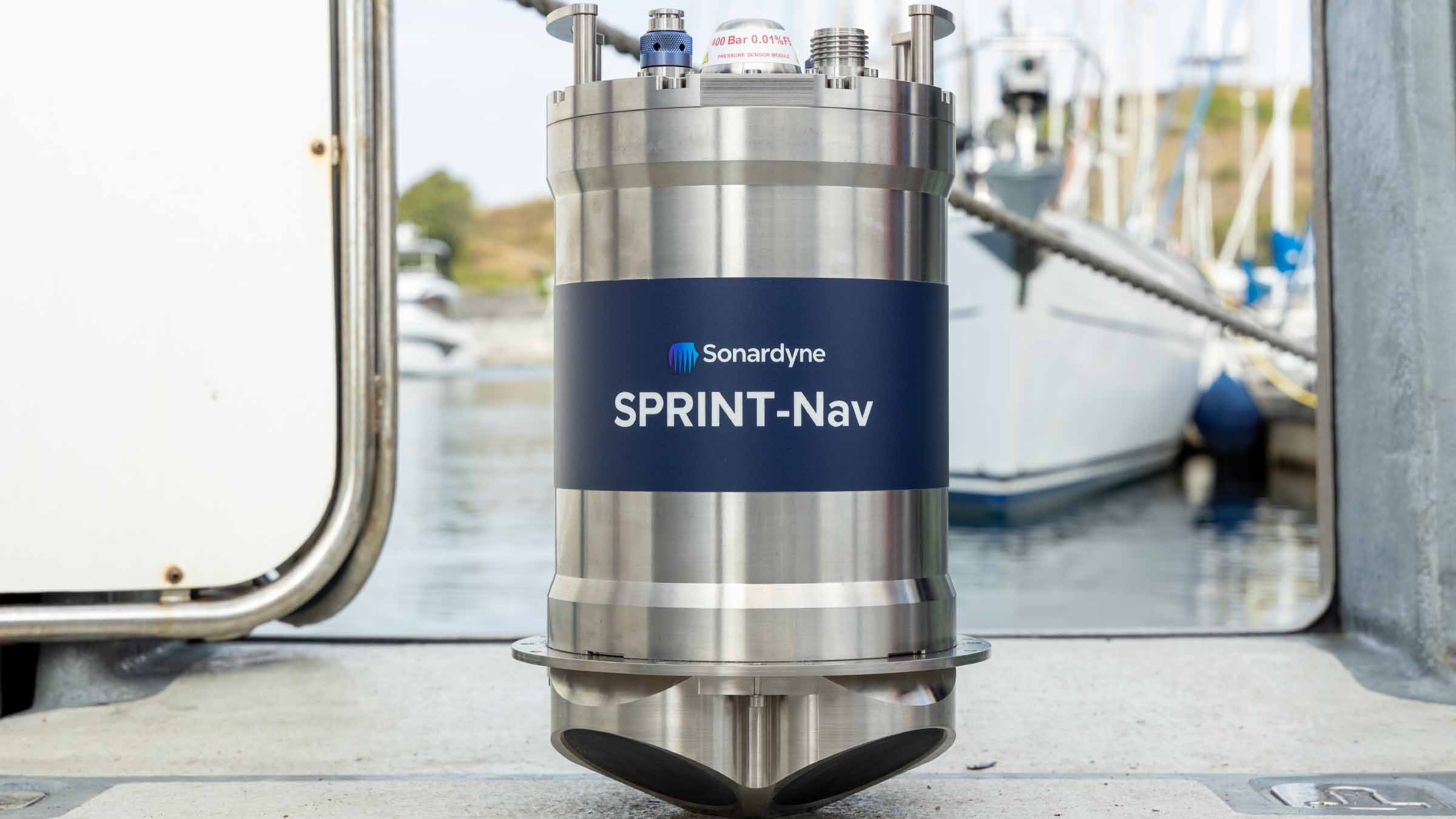
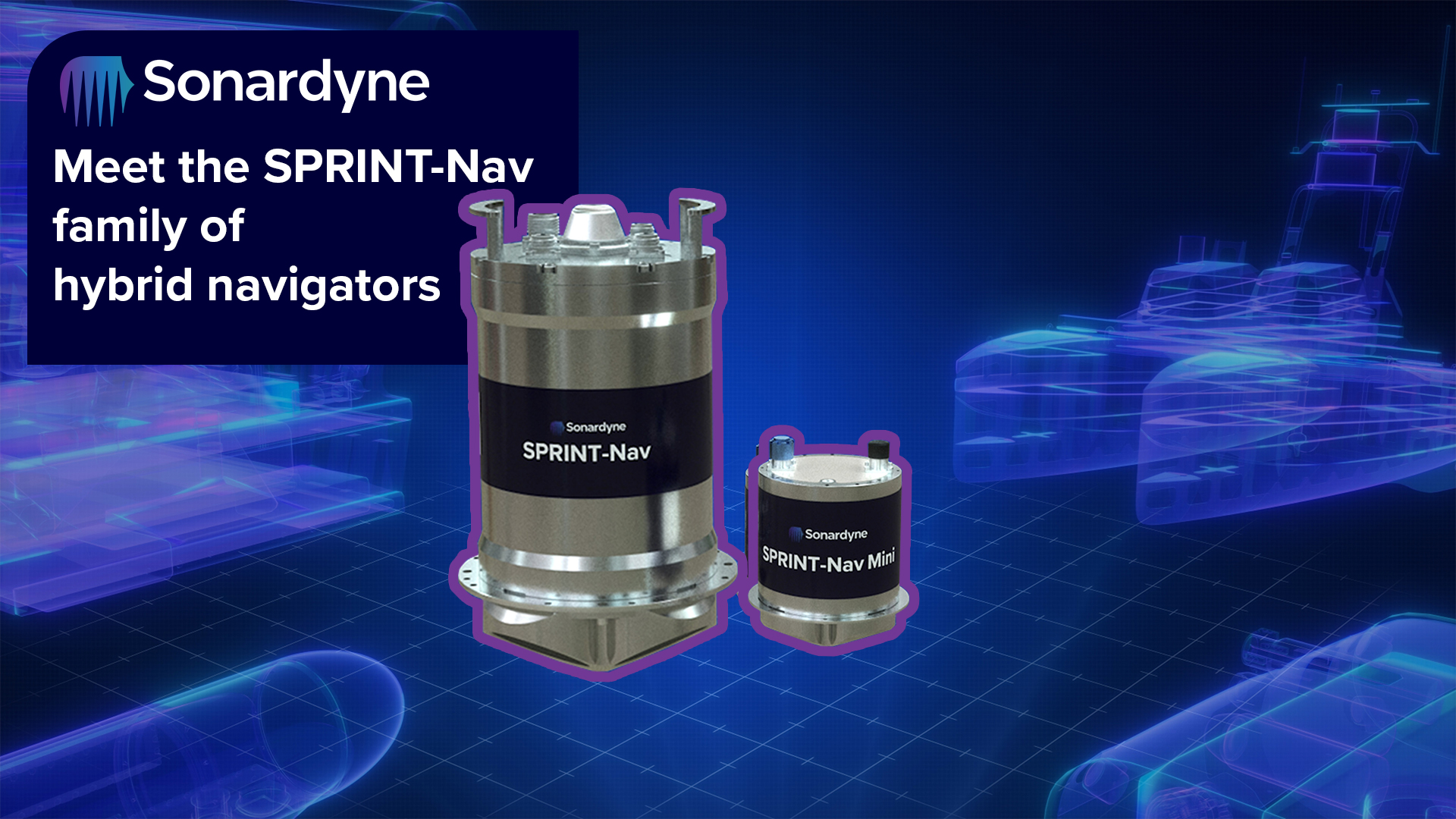
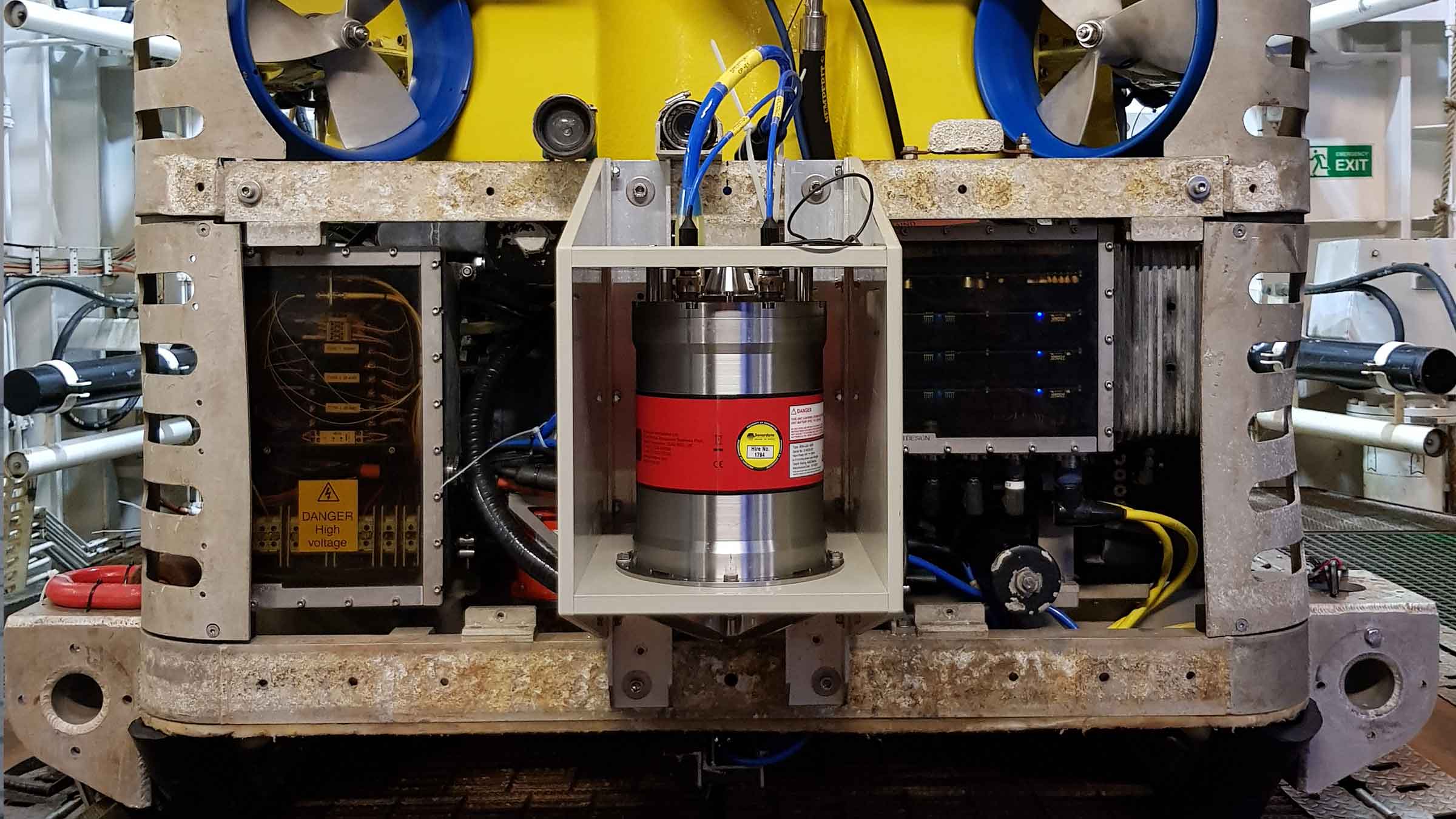
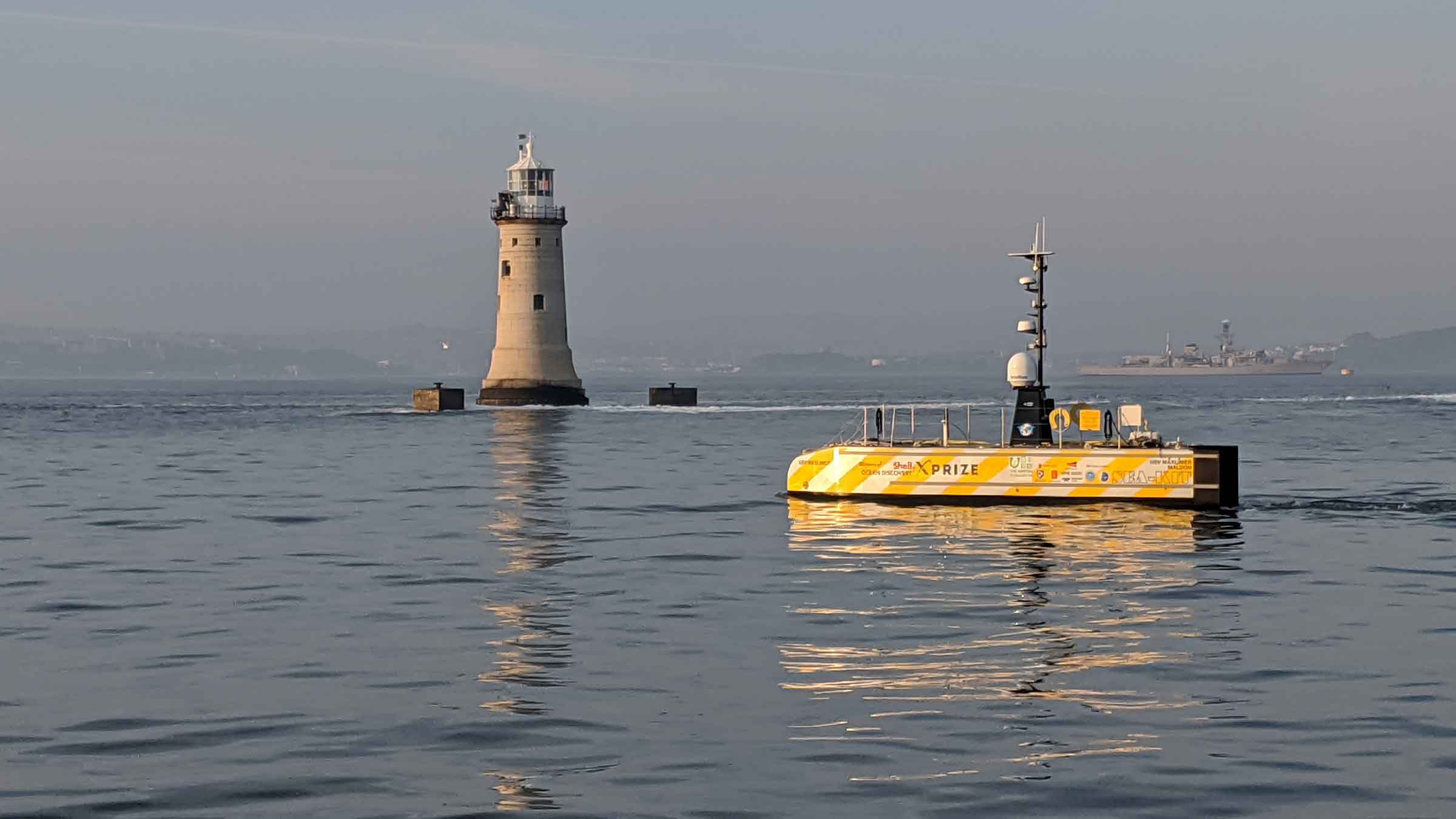
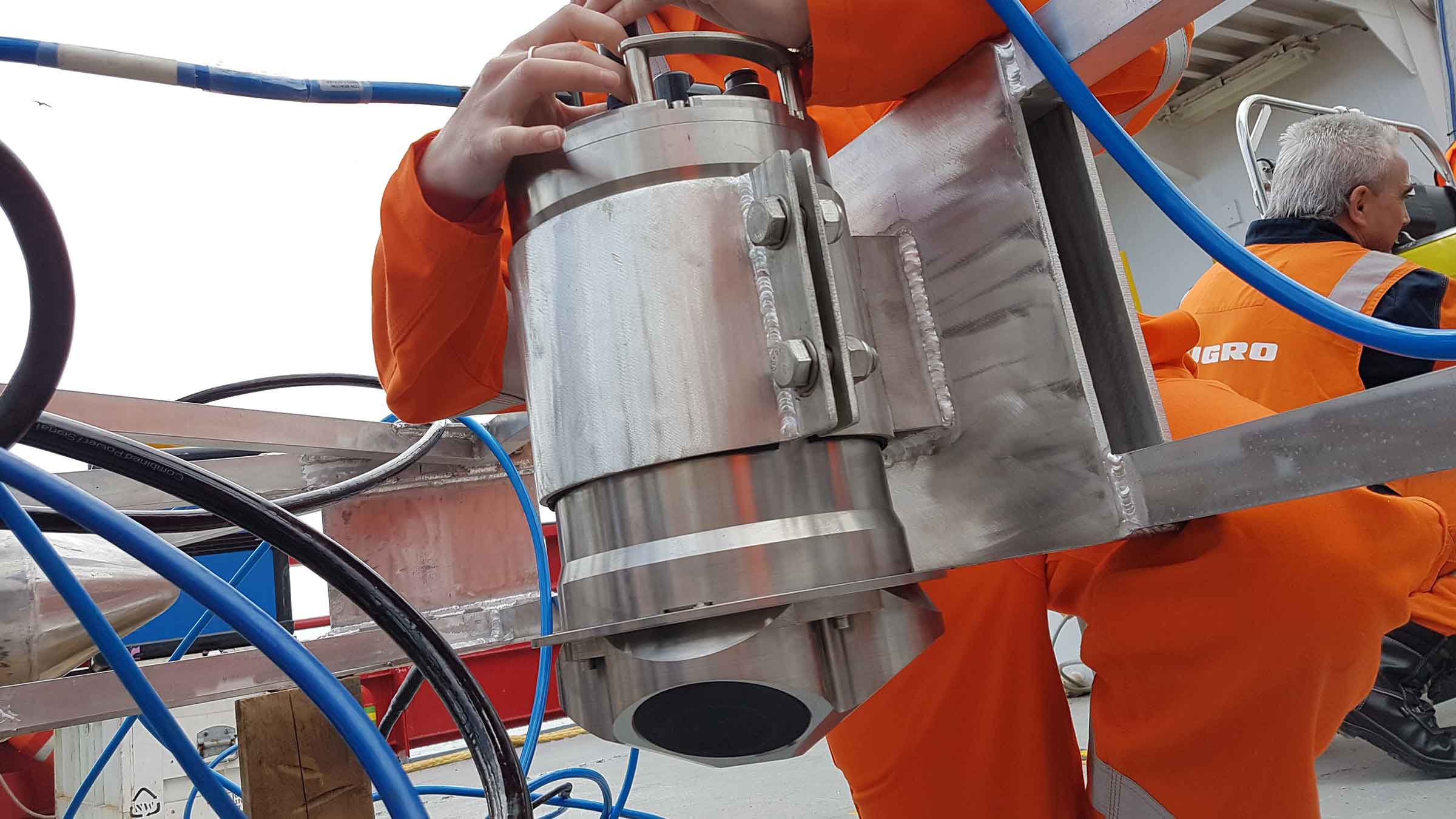
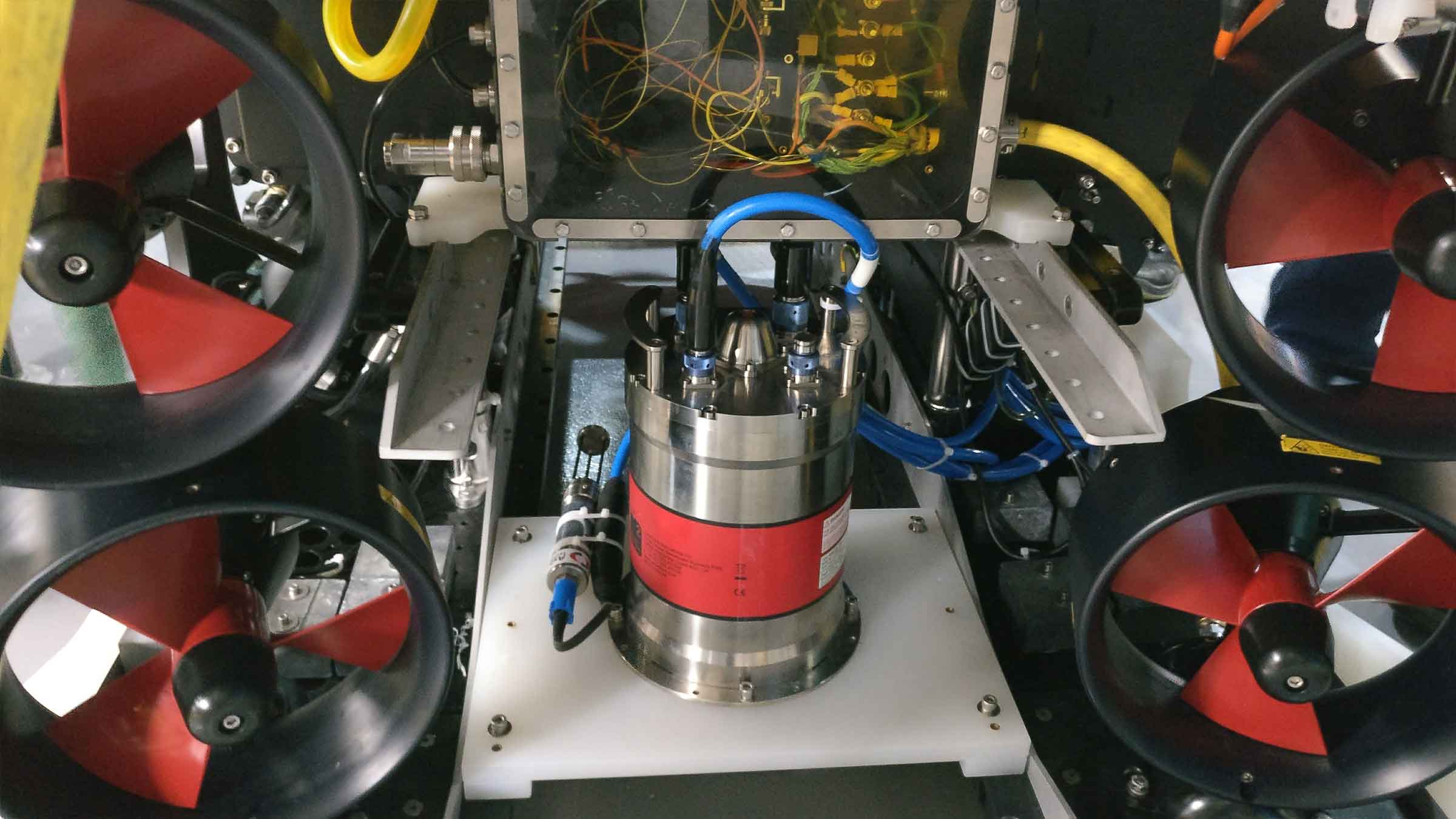
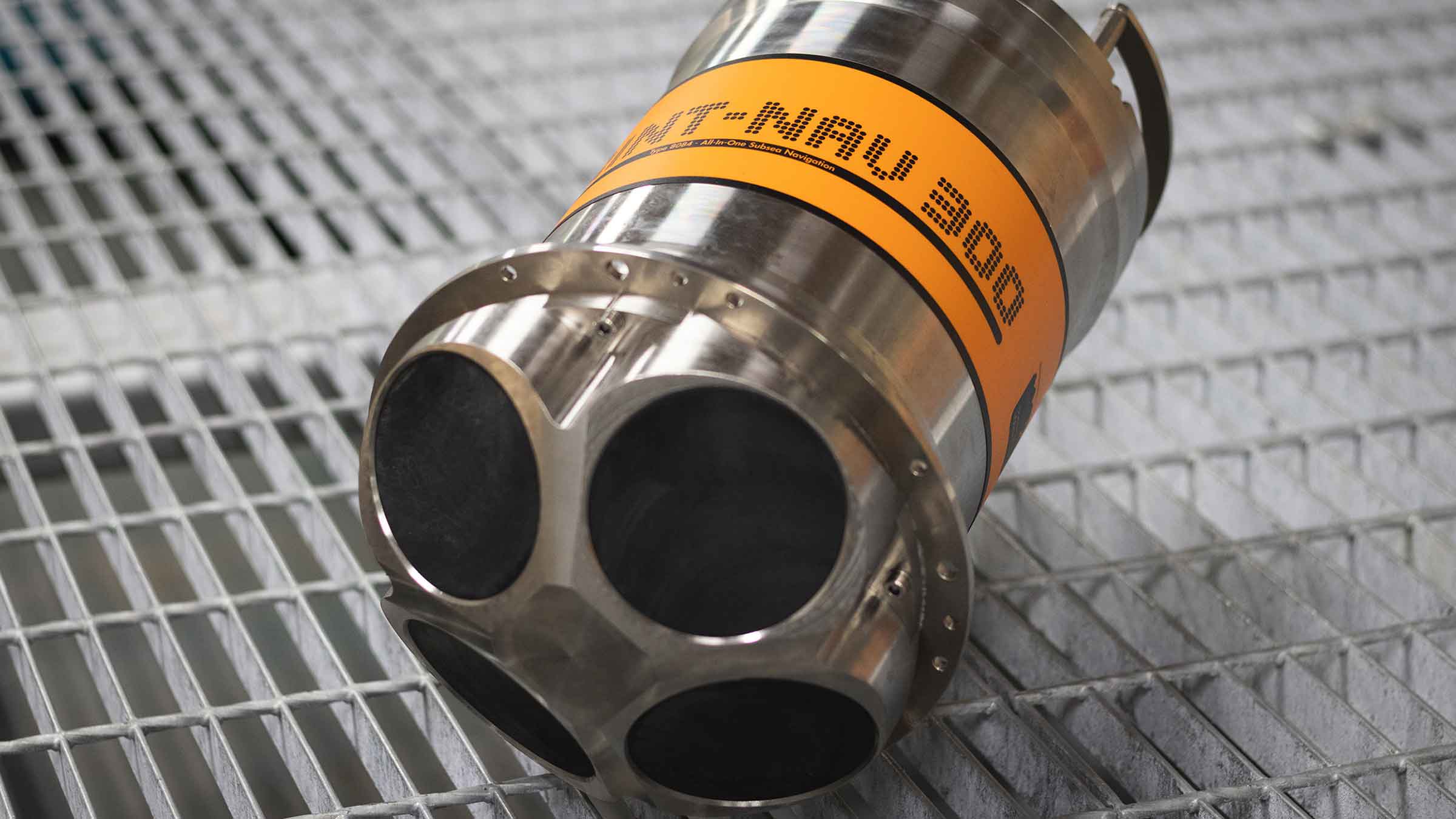
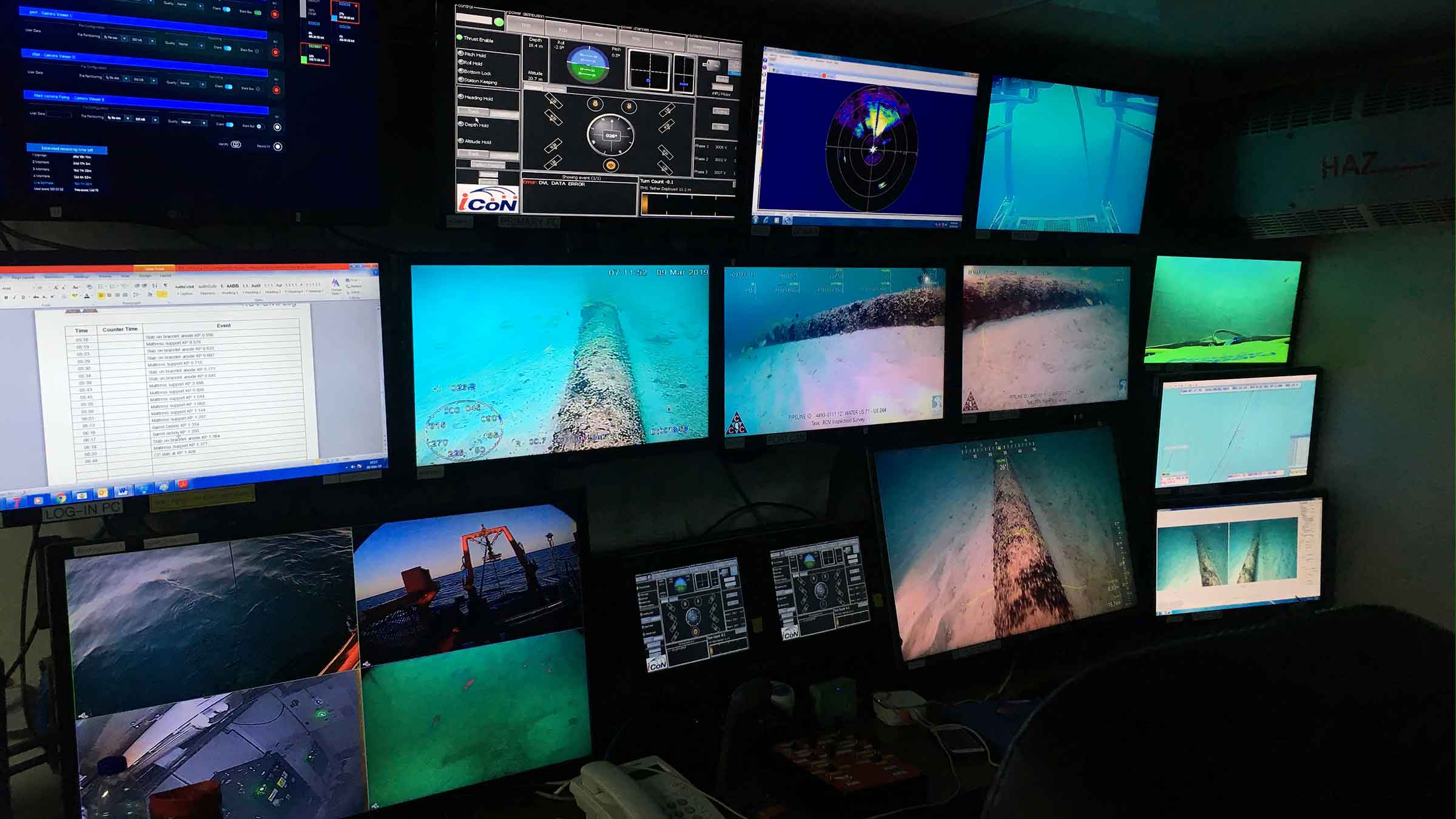
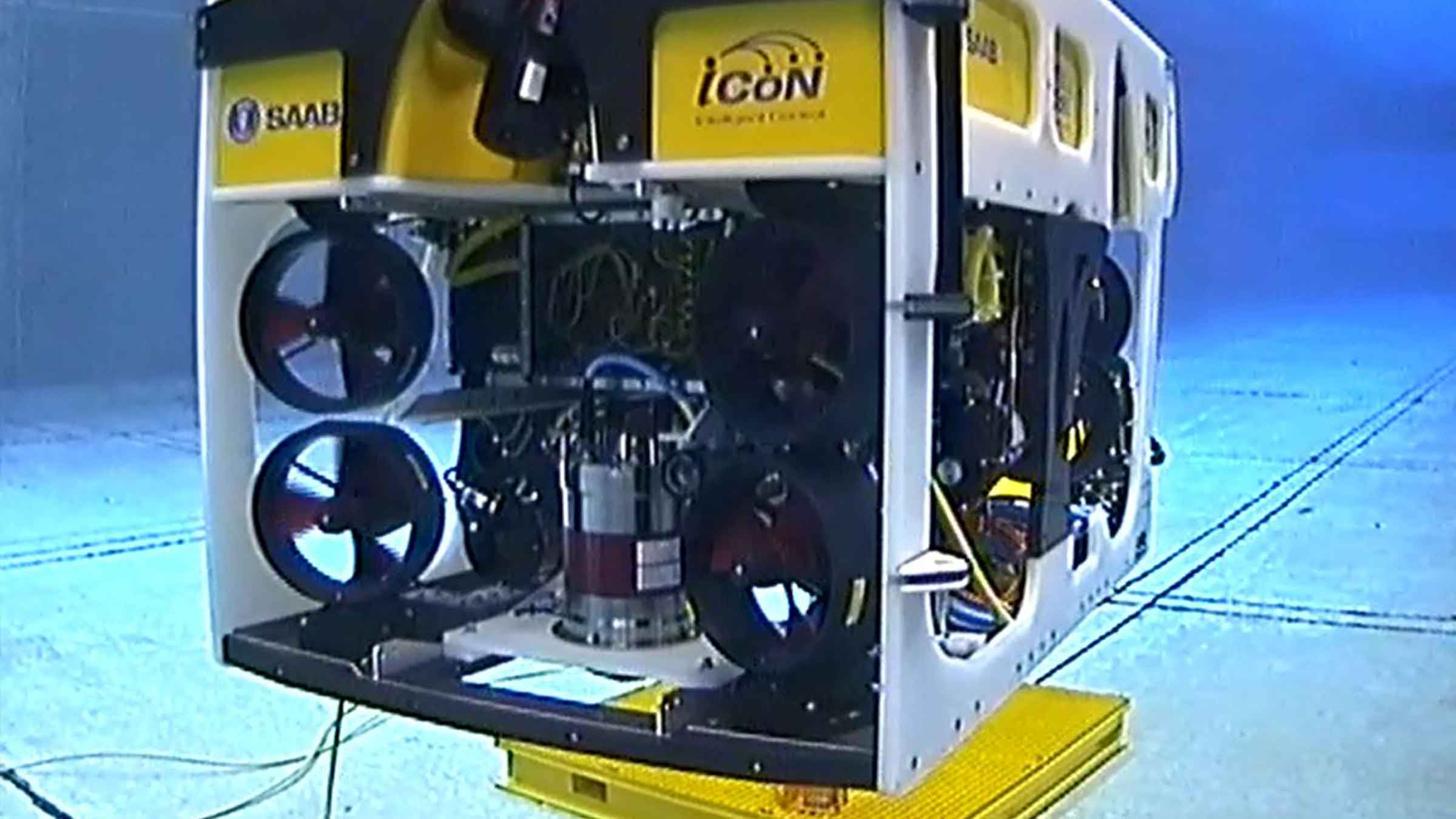
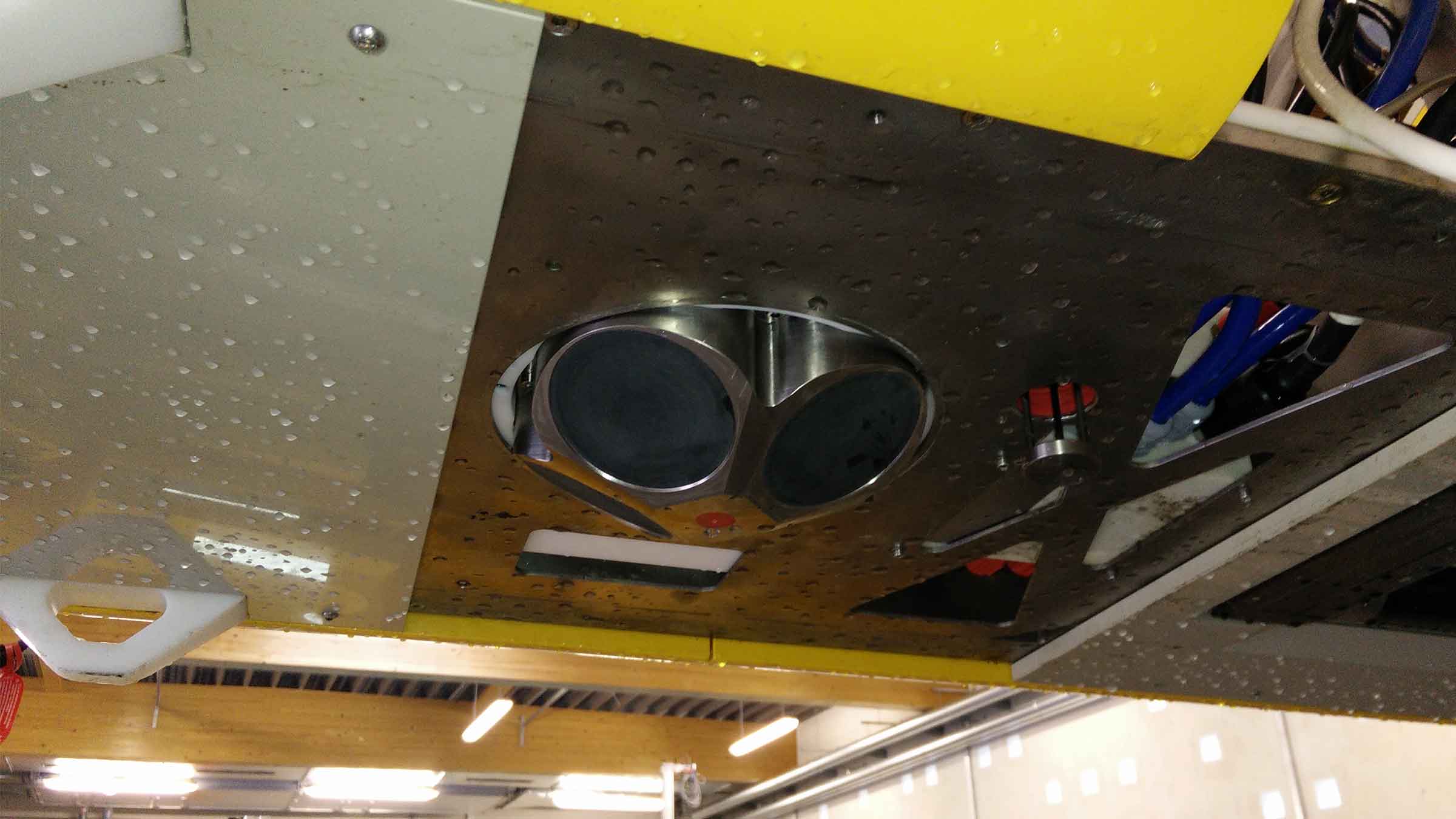
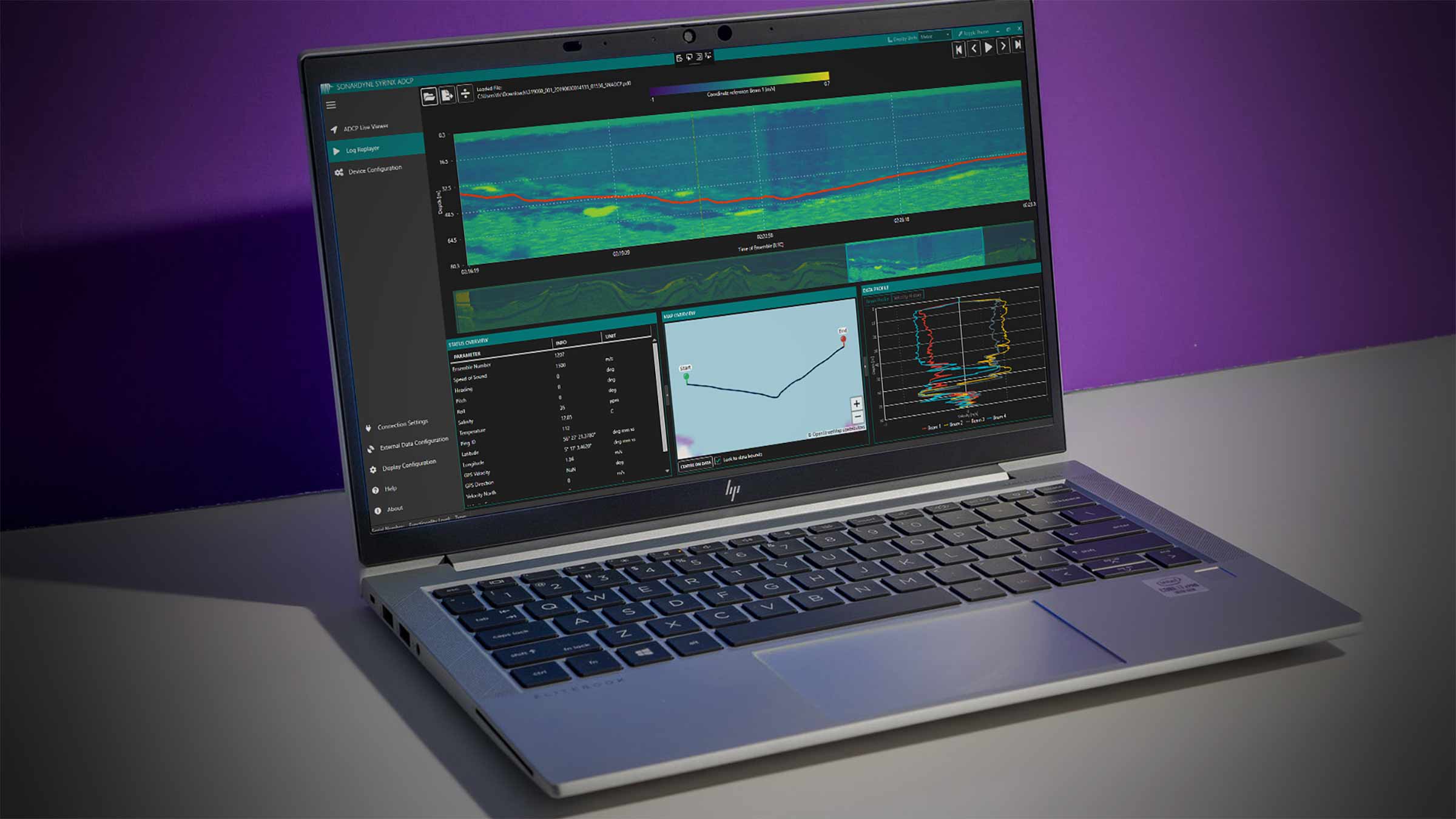
Why invest
Design
-
240 x 395 mm, 13.1 kg weight in water (4,000 m version) 240 x 405 mm, 17.2 kg (6,000 m version)
-
Titanium housing construction
-
Provides concurrent AHRS and INS capability for dual use
-
Onboard data storage and battery backup to ride through brown outs
-
Individually water blocked and replaceable DVL transducers
-
In field remote performance upgrades: Yes
Performance (SPRINT-Nav 500)
-
Heading accuracy 0.04° (secant latitude)
-
0.01° Pitch/Roll accuracy
-
0.02% Typical survey accuracy
-
Station keeping <1m over 24 hours
-
Provides bottom lock up to 230 m
Typical applications
-
ROV and towfish positioning
-
Hydrographic and multibeam survey
-
Offshore construction; trenching, as-laid, OOS, touchdown monitoring, structure placement
-
ROV DP including mid-water station keeping
-
USV navigation in GNSS-denied environments
-
Long endurance XLUUV guidance aiding
Ownership
-
What’s in the box: SPRINT-Nav, mounting plate, Fusion 2 software, test lead and cable tail
-
Warranty: 1 year return to Sonardyne service centre
-
ITAR Controlled: No
-
UK Export License: Yes
SPRINT-Nav case studies
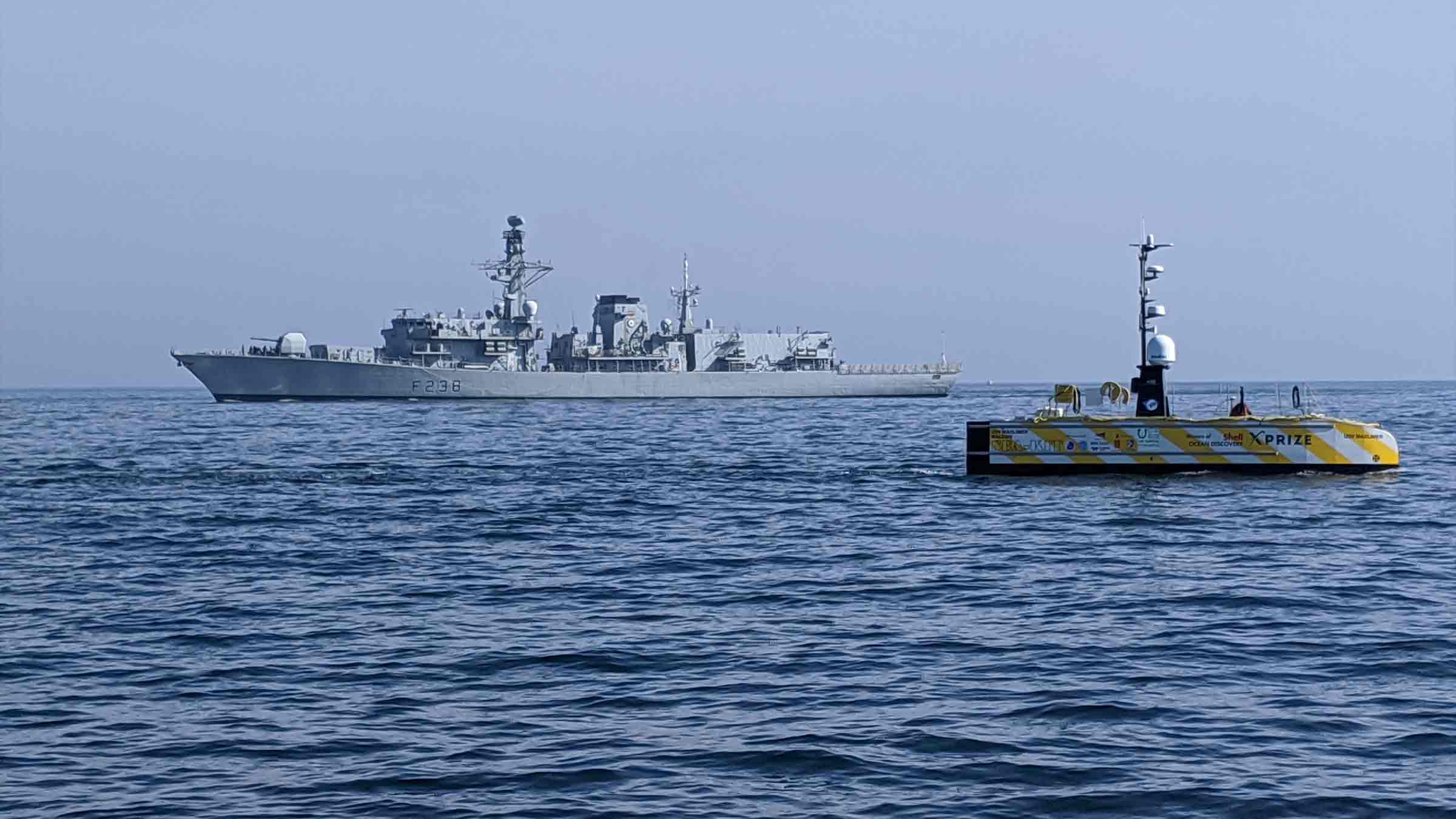
Defence
Dude, where’s my ocean robot?
Read if you’re interested in navigation in challenging maritime and underwater environments and how our hybrid navigator for underwater, and uncrewed vehicles, SPRINT-Nav X, can support USV operations in littoral zones.
Client: DASA and Dstl
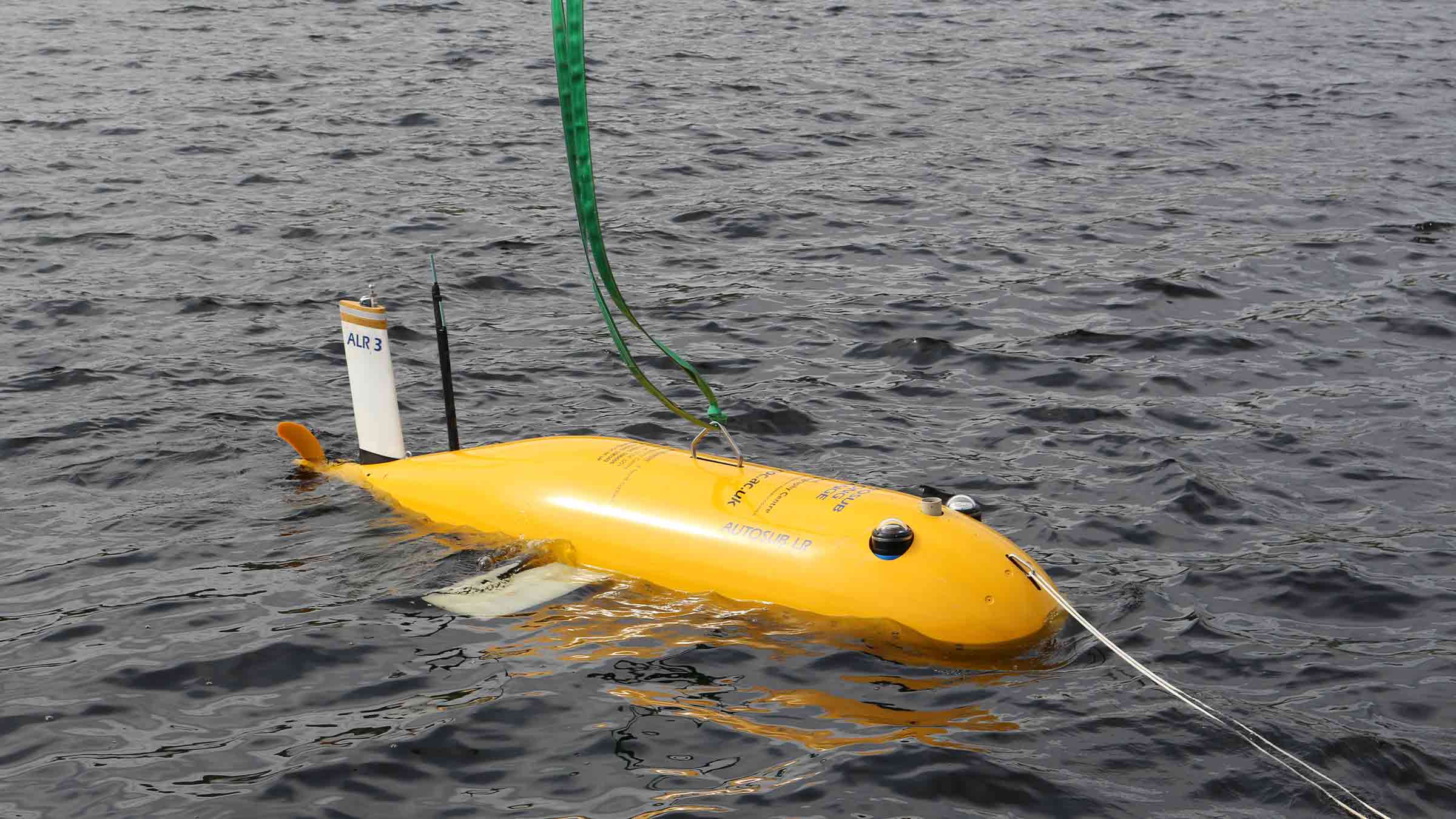
Ocean Science
Extending the limits of autonomous systems
Improving the endurance and navigational precision of underwater autonomous systems, while also reducing costs, could provide disruptive capability in the subsea monitoring and inspection space. Geraint West, Ocean Science Head of Market, explores the challenges and solutions.
Client: National Oceanography Centre (NOC) and L3Harris ASV
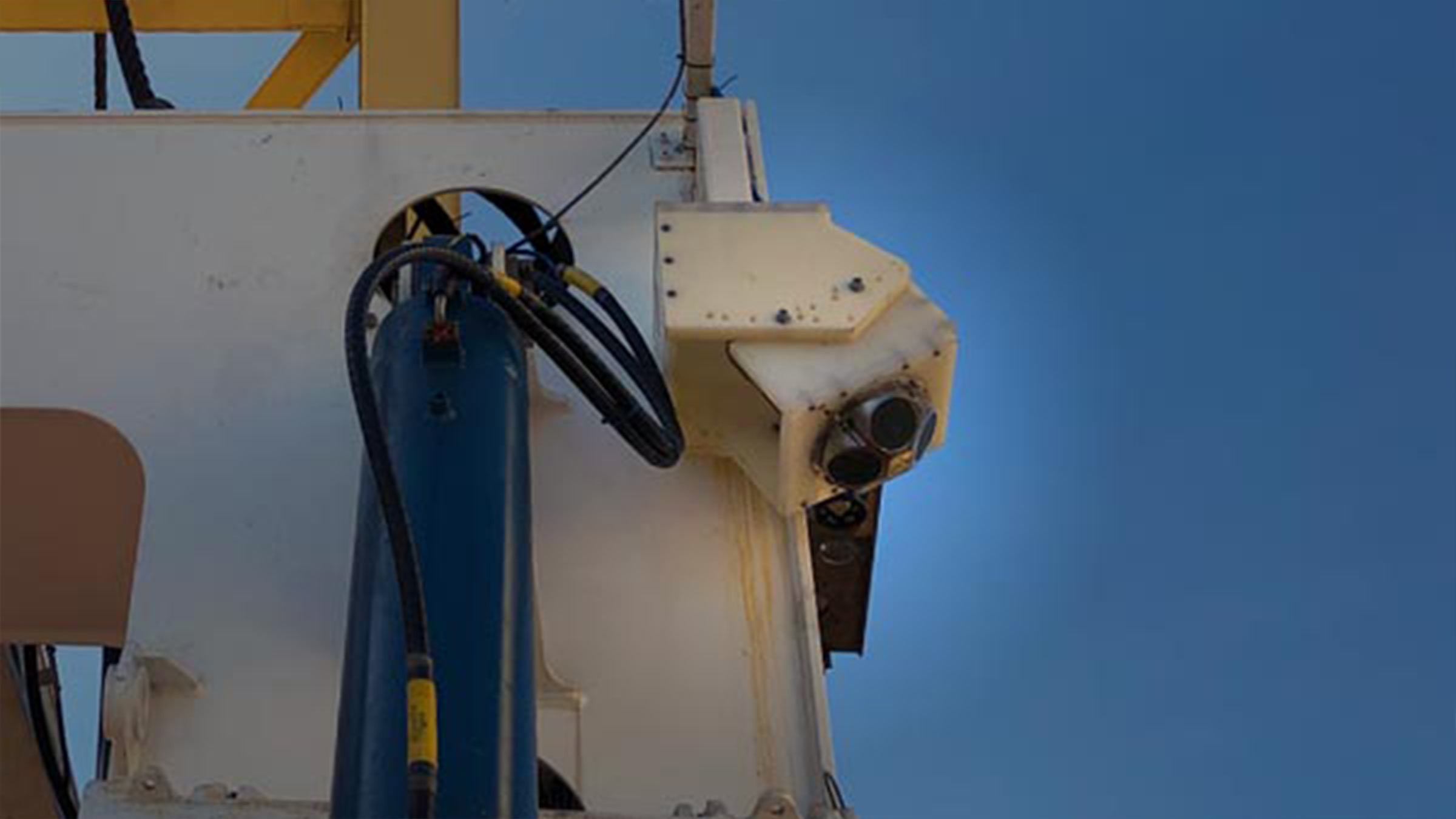
Renewables
DVL aiding – in the harshest environments
Operations involving large vehicles or equipment close to the seafloor can pose a challenge for most traditionally mounted navigation systems. For many applications in these environments, mounting the Doppler velocity log (DVL) with an unobstructed downward view to achieve bottom lock is particularly challenging. Not any more.
Clients: UTEC and DeepOcean
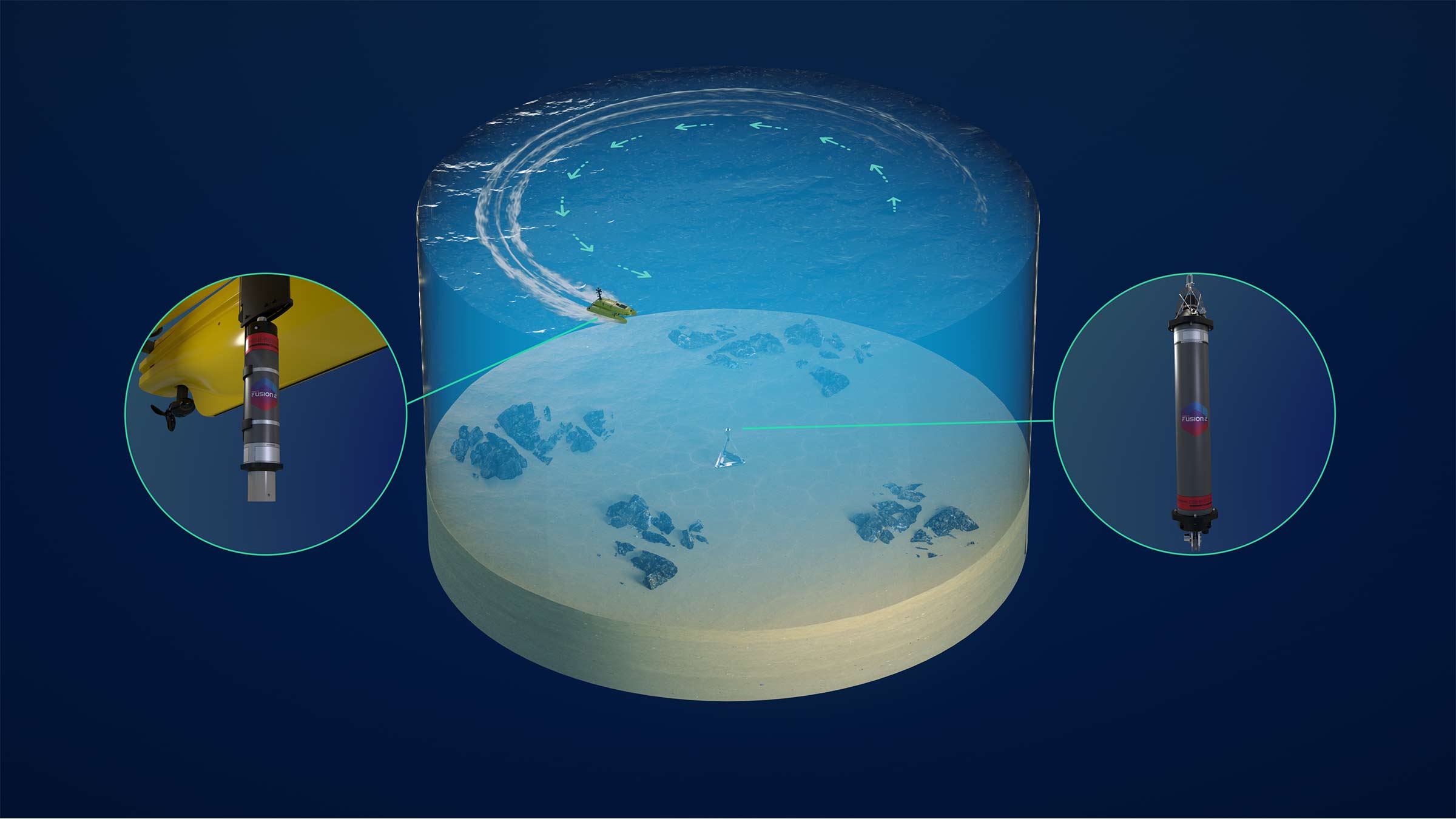
Energy
Using a hammer to crack a nut? Try using a USV instead
USVs are no longer a niche tool used within defence, they’re now regularly patrolling our oceans, gathering hydrographic and oceanographic data. Is it time that they were also used to support smarter, cleaner and more cost-effective offshore construction operations? Ed Moller, Head of Energy, thinks so.
Resources
| Performance | SPRINT-Nav 300 | SPRINT-Nav 500 | SPRINT-Nav 700 | SPRINT-Nav X | |
|---|---|---|---|---|---|
| DVL Aided | Typical Survey | 0.04% | 0.02% | 0.01% | 0.01% |
| Distance from Origin | 0.12% | 0.07% | 0.05% | Get in touch | |
| High Altitude Option (HA) | 0.12% | 0.08% | 0.06% | Get in touch | |
| Unaided | 1.2 m in 60 s | 0.8 m in 60 s | 0.5 m in 60 s | Get in touch | |
| Altitude Min/Max | Standard | 0.4/175 m | 0.4/175 m | 0.4/175 m | 0.4/175 m |
| High Altitude Option (HA) | 0.4/230 m | 0.4/230 m | 0.4/230 m | 0.4/230 m | |
| USBL and DVL Aided (Precision Improvement) | Up to 7x better | Up to 10x better | Up to 13x better | Up to 13x better | |
| Station Keeping | <1 m over 24 hours | <1 m over 24 hours | <1 m over 24 hours | <1 m over 24 hours | |
| LBL/DVL Aided | 3 cm confined area, 20 cm wide area (dynamic) | 3 cm confined area, 20 cm wide area (dynamic) | 3 cm confined area, 20 cm wide area (dynamic) | 3 cm confined area, 20 cm wide area (dynamic) | |
| INS/AHRS Heading (Secant Latitude) | INS | 0.05º | 0.04º | 0.02º | 0.01° |
| AHRS | 0.20º | 0.10º | 0.08º | 0.08° | |
| INS/AHRS Roll and Pitch | 0.01º | 0.01º | 0.01º | 0.01º | |
| Pressure Sensor | 0.01% FS removable module | 0.01% FS removable module | 0.01% FS removable module | 0.01% FS removable module | |
| ADCP | Profiling Range 600 kHz | 0.4–80 m | 0.4–80 m | 0.4–80 m | 0.4–80 m |
| Profiling Range 400 kHz | 0.4–120 m | 0.4–120 m | 0.4–120 m | 0.4–120 m | |
| Vel. Range & RMS (Along Beam) 600 kHz | Up to ±5.6 m/s ±0.4% of measured value | Up to ±5.6 m/s ±0.4% of measured value | Up to ±5.6 m/s ±0.4% of measured value | Up to ±5.6 m/s ±0.4% of measured value | |
| Vel. Range & RMS (Along Beam) 400 kHz | Up to ±8.4 m/s ±0.4% of measured value | Up to ±8.4 m/s ±0.4% of measured value | Up to ±8.4 m/s ±0.4% of measured value | Up to ±8.4 m/s ±0.4% of measured value | |
| Maximum Number of Cells | 255 | 255 | 255 | 255 | |
| Maximum Ping Rate | 4 Hz (ADCP) or 2.5 Hz (DVL+ADCP) | 4 Hz (ADCP) or 2.5 Hz (DVL+ADCP) | 4 Hz (ADCP) or 2.5 Hz (DVL+ADCP) | 4 Hz (ADCP) or 2.5 Hz (DVL+ADCP) | |
| Power Requirements | DVL off | 20–50 V dc, 15 W nominal (35 W maximum) | 20–50 V dc, 15 W nominal (35 W maximum) | 20–50 V dc, 15 W nominal (35 W maximum) | 20–50 V dc, 15 W nominal (35 W maximum) |
| DVL on and battery fully charged | 20–50 V dc, 25 W nominal (35 W maximum) | 20–50 V dc, 25 W nominal (35 W maximum) | 20–50 V dc, 25 W nominal (35 W maximum) | 20–50 V dc, 25 W nominal (35 W maximum) | |
| Internal Battery Backup | Li-ion/5 minutes | Li-ion/5 minutes | Li-ion/5 minutes | Li-ion/5 minutes | |
| Data Storage | 8 GB internal memory | 8 GB internal memory | 8 GB internal memory | 8 GB internal memory | |
| Serial Ports/Protocol | 4x RS232 or RS485 | 4x RS232 or RS485 | 4x RS232 or RS485 | 4x RS232 or RS485 | |
| Other Ports | Ethernet, 4x Triggers | Ethernet, 4x Triggers | Ethernet, 4x Triggers | Ethernet, 4x Triggers | |
| Mechanical Construction | Titanium | Titanium | Titanium | Titanium | |
| Dimensions (Diameter x Height) (incl. connectors and mounting ring) | 4,000 m | 240 x 395 mm | 240 x 395 mm | 240 x 395 mm | |
| 6,000 m | 240 x 405 mm | 240 x 405 mm | 240 x 405 mm | 240 x 395 mm | |
| Weight Air/Water | 4,000 m | 23.9/13.1 kg | 23.9/13.1 kg | 23.9/13.1 kg | 23.9/13.1 kg |
| 6,000 m | 28.1/17.2 kg | 28.1/17.2 kg | 28.1/17.2 kg | 28.1/17.2 kg | |
| Depth Rating | 4,000/6,000 m | 4,000/6,000 m | 4,000/6,000 m | 4,000/6,000 m | |
| Operating Temperature | -5 to 50°C | -5 to 50°C | -5 to 50°C | -5 to 50°C | |
| Storage Temperature | -25 to 55°C | -25 to 55°C | -25 to 55°C | -25 to 55°C |
